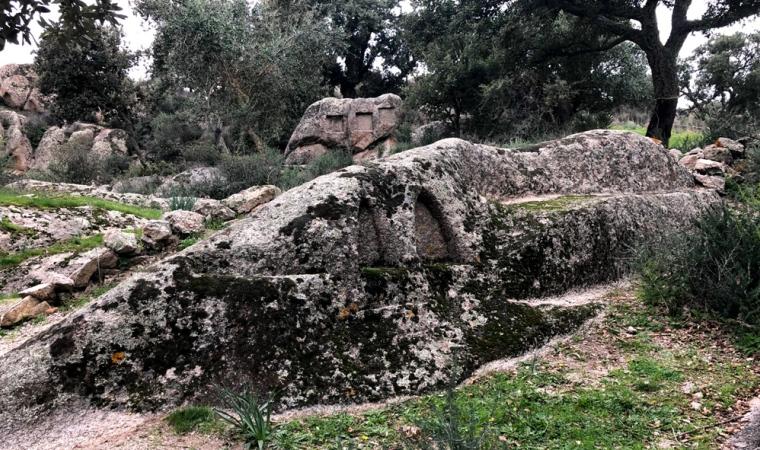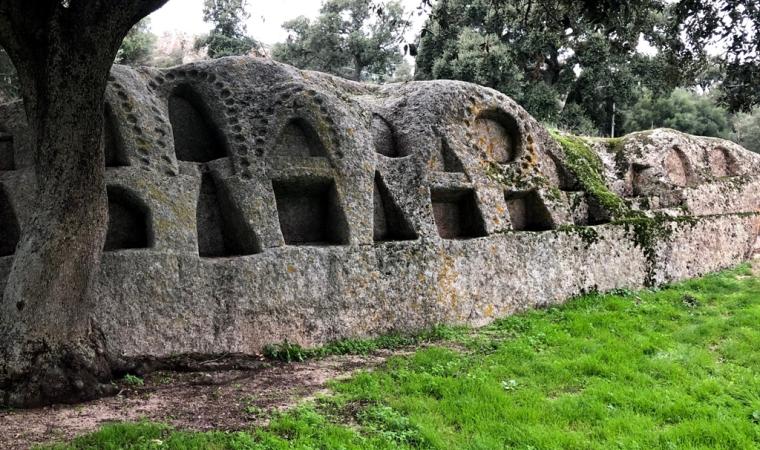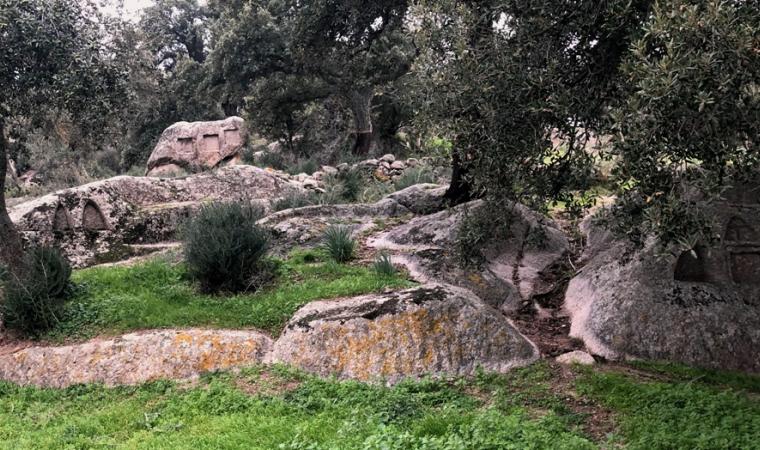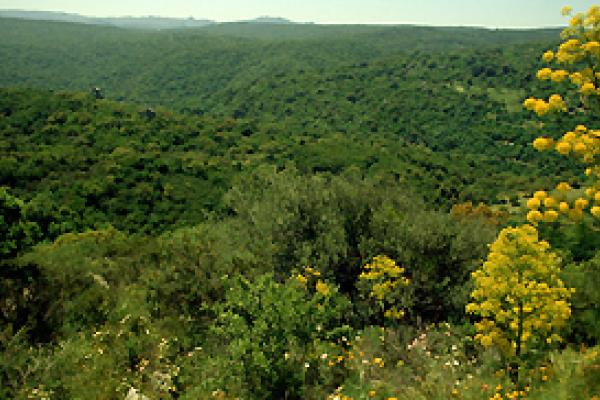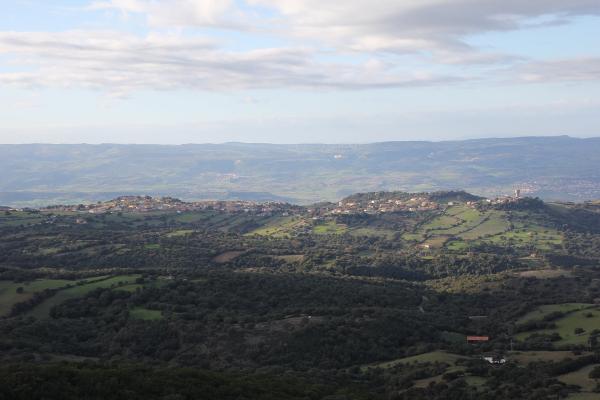There is nothing quite like it anywhere else in the Mediterranean: It’ll feel as if you’ve been transported to a strange and mysterious place that evokes deep thoughts and poses unanswered questions. Halfway between Sassari and Olbia, in the Oschiri countryside, nestled in a surreal silence and stunning nature, lies a 10-meter-long slab of granite embellished with a precise sequence of geometric incisions. The stone “table” has been described as a “stone altar” because it sits facing the church of Santo Stefano, whence the name. In a nearby wood of Mediterranean brush is a necropolis with eight domus de Janas, or House of the Fairies, surrounded here and there by rocks with niches where it is hard to distinguish which are the work of man and which that of nature.
On the wide granite wall of the altar are incisions in a variety of different shapes: triangular, quadrangular and semicircular recesses, surrounded by dozens of cup marks and crosses. Between the necropolis and the altar, four other engraved rocks can be identified, each both charming and sacred: one with three quadrangular niches and cup marks above and below; another with two triangular recesses and a ledge, perhaps used for votive offerings or incubation rites; a rectangular niche, similar to a stone ‘tent’ or tafone tomb; finally, a 'meridian' consisting of a circular recess, surmounted by a step and surrounded by cup marks. Many of the incisions have been “Christianised” by the addition of a cross to erase its pagan origins. Dating the site is rife with uncertainty: the underground necropolis suggests anytime from the recent Neolithic to the Copper Age (4th-3rd millennium BCE). But there are those who say it dates to after the advent of Christ or even Byzantine times. While the absence of a thorough archaeological study has left it open to a wide range of interpretations, the symbols carved into the stone are entirely without explanation. The designs cannot be compared to any others, tied to rites and with profound religious value, recognizable as divine or astronomical symbols. The area around Santo Stefano remains imbued with a tangible sacredness: female shamans may have given birth here, or corpses may have been stripped here before being deposed within the domus. There is a sequence to the geometric figures and cup markings: they seem to describe the passage from the world of the living to that of the dead. The squares would have symbolised doors, typical of a domus and a Giants’ Tomb, a meeting point between the earth and heaven. The circles are a pagan symbol of continuity, infinity, solar divinities. The triangles can be seen as temples with steps. The site was a centre of profound spirituality for all the civilisations that settled here, from the Neolithic to the Christian Era. It comes as no surprise then that the site houses the remains of a Nuragic temple, and various other pre-Christian relics. Here, 2 kilometres north of town, in the late 15th century they built, possibly on the remains of a Byzantine building, a rural sanctuary to substitute or absorb sacred powers. It too seems to guard secrets: a small Nuragic betyl was adapted for use as a stoup and two stylized faces of the Phoenician goddess Astarte were carved into the façade. At the southern entrance, a trachyte architrave bears a Byzantine inscription (or ancient Logudorese) bearing the date of its construction: 1492. A parchment discovered during the restoration shows 1504 as the date of its consecration.
To get to the site, you will pass through an area of settlements that are the oldest Neolithic (3500-2700 BCE) civilisations in Sardinia, the Ozieri culture, not far from Oschiri. The entire Oschiri area, which goes from the foothills of Limbara and looks out over Lake Coghinas, to the border between Logudoro and Gallura, is dotted with prehistoric remains: a total of 70 domus de Janas, several dolmen and menhirs, some 60 Nuragic settlements. In the MuseOs, the town’s archaeological museum, you’ll find relics that date to Nuragic and Roman castrum times, symbol of one of Sardinia’s most Romanised areas, populated until the Middle Ages and home to Oschiri’s most famous church, Nostra Signora di Castro, its cathedral until 1508.





